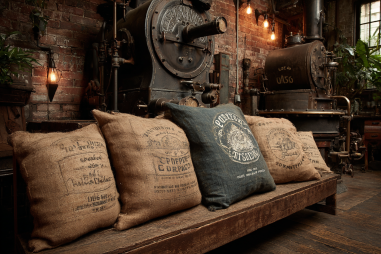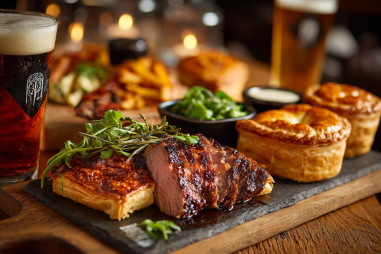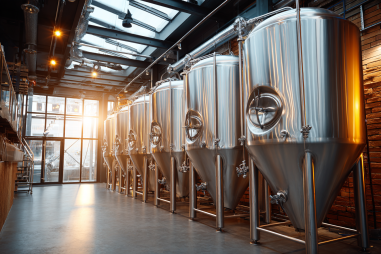Irish Red Ale is a beloved beer style known for its distinctive amber-red hue, balanced malt sweetness, and subtle hop bitterness. Whether you’re a homebrewer or simply curious about what makes this classic beer tick, understanding the core brewing ingredients is key. From the malts that deliver color and body to the hops that bring delicate aroma and bitterness, each element plays a vital role. Let’s take a deep dive into the main ingredients—malt, hops, yeast, and water—and explore how their selection and interaction create the magic behind an Irish Red Ale.
The Role of Malt in Irish Red Ale
Malt is the backbone of any beer, and in Irish Red Ale, it’s the primary source of the beer’s rich color and malt-forward flavor profile. The malt selection focuses primarily on barley and tends to include a mix of base malts and specialty malts to develop complexity.
Typically, Irish Red Ale uses a base malt such as pale malt or two-row malt, which provides the fermentable sugars needed for alcohol production and a clean, slightly sweet foundation. What makes the color and characteristic toffee and caramel flavors shine are specialty malts—usually crystal or caramel malts ranging from 40 to 60 Lovibond in color.
These crystal malts have been kilned to develop a sweet, caramelized sugar flavor and a reddish hue that gives Irish Red Ale its trademark amber-red shade. Additionally, a small percentage of roasted barley or chocolate malt may be added for depth and a hint of roasted, nutty flavor without turning the beer too dark or bitter.
In terms of malt contribution:
- Color: Crystal malts impart the reddish amber tones essential for the style.
- Flavor: They add caramel, toffee, and light nuttiness.
- Body: Malt provides the smooth mouthfeel and moderate body that balances the hop bitterness.
Choosing the Right Hops
While Irish Red Ales are malt-driven, hops are crucial to balance the sweetness and provide a clean bitterness. Typical hop bitterness levels are moderate, usually around 20-30 IBUs, ensuring the beer is neither too bitter nor too sweet.
The hops commonly used in Irish Red Ale derive from traditional English or Irish hop varieties such as East Kent Goldings, Fuggle, or Goldings. These hops are prized for their earthy, floral, and slightly spicy characteristics that complement the maltiness rather than overpower it.
These hop varieties contribute subtle aromatic qualities and bitterness without intense citrus or pine flavors seen in American hops, maintaining the smooth, approachable profile.
Hop characteristics in Irish Red Ale include:
- Moderate bitterness to balance malt sweetness
- Earthy, floral, and slightly spicy aroma
- Low to medium alpha acid content, which allows brewing precision
Yeast Strains and Fermentation Impact
Yeast is the unsung hero that influences the final flavor, aroma, and mouthfeel of an Irish Red Ale. The choice of yeast strain impacts the beer’s fruity esters, attenuation, and overall clean profile.
Irish Red Ales typically use ale yeast strains that produce a clean, well-attenuated beer with subtle fruity esters. Traditional Irish strains or other British ale yeasts like Wyeast 1084 or White Labs WLP004 are often chosen because they ferment cleanly at moderate temperatures, usually between 65-70°F (18-21°C).
The yeast’s performance affects:
- Fermentation Profile: Clean fermentation with slight fruitiness, avoiding excessive phenols or esters.
- Mouthfeel: Produces a smooth, medium-bodied beer that feels soft on the palate.
- Carbonation: Proper yeast activity contributes to natural carbonation, adding freshness.
Water Profile: The Quiet Contributor
Water is often overlooked, but it’s a critical component in brewing. The mineral content and pH of water impact enzyme activity during mashing and ultimately affect flavor clarity and balance.
Irish water historically has a moderately soft profile, with low to moderate levels of calcium and magnesium, and modest sulfate to chloride ratios favoring a smooth malt character. Soft to moderately hard water helps preserve the beer’s balanced malt sweetness and prevents unwanted harshness.
Important water considerations include:
- pH Levels: Ideal mash pH between 5.2 and 5.6 ensures optimal enzyme function.
- Mineral Content: Balanced calcium and magnesium aid yeast health and beer stability.
- Sulfate to Chloride Ratio: Lower sulfate levels keep bitterness rounded and malt sweet; higher chloride adds fullness.
Tips for Sourcing Quality Ingredients
For brewers aiming to create an authentic Irish Red Ale, ingredient sourcing is crucial. Here are some tips:
- Malt: Look for fresh, high-quality specialty malts from trusted maltsters. Consider purchasing from local malt suppliers or well-known online retailers. Opt for crystal malts in the 40-60 Lovibond range for that classic color and flavor.
- Hops: Choose traditional Irish or English hop varieties from reputable sources. Use whole leaf or pellet hops stored properly to preserve freshness and aroma.
- Yeast: Use liquid yeast strains designed for Irish Red Ale or British ales. Maintaining proper fermentation conditions is essential, so invest in a good temperature-controlled fermentation setup.
- Water: If your tap water is hard or heavily chlorinated, consider using bottled spring water or reverse osmosis water and adjust mineral content with brewing salts to mimic Irish water profiles.
Remember, freshness is key for hops and yeast, while malts should be stored in a cool, dry place. Experimenting with slight ingredient adjustments can help you fine-tune the flavor to your liking.
Cultivating the Classic Irish Red Ale Experience
The signature allure of Irish Red Ale lies in its harmony of rich malt sweetness, moderate hop bitterness, and smooth mouthfeel—all gifts from thoughtful ingredient choices. By selecting the right malt varieties, brewing with traditional hop types, utilizing clean ale yeast strains, and paying careful attention to water chemistry, brewers can craft an authentic and delicious Irish Red Ale.
Whether brewing at home or appreciating this timeless style, understanding the ingredients’ roles helps deepen your appreciation for the craftsmanship behind each pour. So next time you sip an Irish Red Ale, you’ll know exactly what makes it shine—from the caramel malts to the earthy hops, the yeast fermentation, and the subtle nuances of water.







